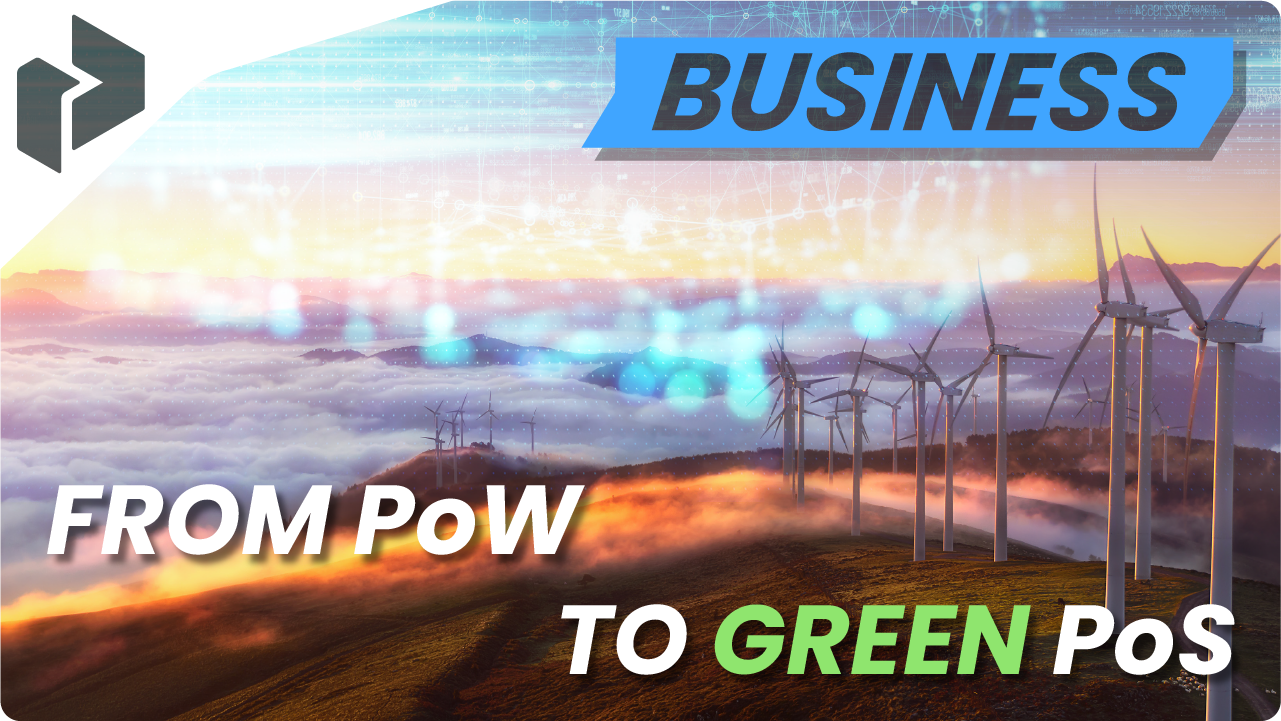We often field questions from people trying to understand more about our technology, how it works, what it means for the user experience, and what it means for the environment.
After being satisfied that we have a platform that has great utility use cases, conducts itself ethically, has real and tangible benefits for gamers, esports participants, content creators and developers, and is 100% carbon neutral; The final question remaining may sometimes be – “But you accept Proof of Work (PoW) tokens. Isn’t that bad?”.
Considering our dedication to making a better-for-everyone platform experience, you can imagine that we don’t take any decision lightly. This one included.
Read below to see how our allowing on-boarding using PoW tokens – or more precisely, our incentivising off-boarding from PoW tokens – is done precisely with the environment and encouraging a transition to a green Proof of Stake (PoS) eco-system in mind.
Key Points
-
We don’t accept PoW tokens. PoW token sales are handled by a 3rd party exchange, who pays us in USD. We then give the person who off loaded their PoW tokens an allocation of GOATi tokens – Our stable, and green, PoS currency on Phantasma Chain.
-
It’s a win when we encourage someone to offload any environmentally unfriendly and speculative non-utility tokens in exchange for eco-friendly tokens that have utility – Just as we encourage and celebrate shareholders divesting holdings in coal fired power generation and instead investing them into green energy projects.
-
If we can convince everyone holding PoW tokens to divest and instead move their liquidity into carbon neutral PoS tokens, the price and carbon footprint of PoW tokens would go to zero, and PoW associated environmental concerns would be resolved.
On accepting payment in PoW crypto currency
Pavillion doesn’t directly accept PoW tokens. We’ve integrated with an exchange that handles the cryptocurrency transactions for us, which then gets paid out to us in USD. Once we receive notification that an on-boarding user has divested their PoW tokens, we then issue them with our carbon neutral PoS tokens.
Interestingly – and to our initial surprise – we have had as few as 20 PoW cryptocurrency transactions to date, with essentially all of our customers on-boarding in either USD or the eco-friendly PoS Phantasma Chain token, called SOUL.
Upon reflection, we attribute this unexpected skew precisely to the common complaints of PoW tokens, namely:
- They’re extremely slow to transact
- Transaction fees are expensive
- They generally have no utility, and so people who buy them do so to hold them for speculation rather than for spending.
If we don’t receive many payments in PoW tokens, then why accept them at all?
If we were to disallow on-boarding with PoW tokens, it wouldn’t hurt our platform revenue or growth at this stage. On the contrary, leaving them available might even cause us financial harm, if it were to put off potential customers who take things at face-value and don’t understand our long term environmental vision and eco-system divergence intentions.
Sometimes the best solution lies a little deeper, and beyond the obvious…
We have chosen to leave this on-boarding option available, because it aligns with our long-standing core value of environmental and social responsibility, and believe this decision will ultimately lead to the best possible outcome, with the broadest impact long term.
How so? Every time we convince someone to divest their PoW token and enter a utility market with a clean PoS token, we’re moving liquidity out of an unclean network, and in turn, on-boarding a new user (along with their liquidity) into a clean one. We see this as a step in the right direction towards a cleaner world, and a part of the environmental solution.
Every PoW to PoS conversion is a win
Encouraging people to divest PoW tokens may still not be fully understood by some, so let’s take a closer look into how markets, and market drivers work, and draw some present day parralels to similar activities in markets that we better understand.
Let us look at a user experience case study:
There’s someone that’s holding onto, let’s say, Ethereum, they see Pavillion, they like the games on it, they like it more than the Ethereum that they’re holding onto, so they decide to offload it and exchange it for our energy efficient and carbon neutral stable GOATi token, which can’t be speculated on, but can only be used to buy digital items that have a utility.
We can directly relate this to someone divesting shares in coal or oil, and instead buying shares in a green energy project. Each sell order pushes downward pressure on a share, reducing the share price and so the viability and value of the divested project. In turn, when money flows into green energy projects it has the duality of bringing in working capital that can be used by the projects to develop and grow, which increases their market size and viability, exponentially driving upward momentum in green energy investment attractiveness.
With enough support in this direction, then an inversion in investment can occur, where investing in previous generation technologies is seen as the riskier long term investment prospect, and instead investing in future resilient and environmentally clean technologies – with high transaction speeds and extremely low transaction fees a natural positive by-product of their superior eco-efficiencies – helps to make green energy projects the more dominant investments and projects.
Reference: See article from The Guardian “Blackrock says climate crisis will now guide investments“,
Does accepting on-boarding with PoW legitimise them?
No. In the same way that green energy doesn’t legitimise coal fired power projects, and electric vehicles don’t legitimise diesel engines.
Pavillion provides zero incentives to buy or hold any PoW tokens. On-boarding with them is more costly and difficult than on-boarding with any fiat currency (USD, AUD, EURO, etc), therefore highlighting where PoW token technologies fall short.
Concerns with emerging technologies are common throughout history.
‘A respected Swiss scientist, Conrad Gessner, might have been the first to raise the alarm about the effects of information overload. In a landmark book, he described how the modern world overwhelmed people with data and that this overabundance was both “confusing and harmful” to the mind.’
Gessner passed away 1565 – His warnings referred to the seemingly unmanageable flood of information unleashed by the printing press.
Reference: See article from Slate “A History of Media Technology Scares from the Printing Press to Facebook“
Where to from here?
For anyone still concerned about blockchain technology – If we can first accept that this technology is not going anywhere, then perhaps we can instead look at ways that we can all move forward.
We’ve experienced long and drawn out divergence away from other technologies; i.e. combustion vehicles (1885), air travel with combustible fuels (1914), coal fired power plants (1882), etc – All of which have been unfathomably massive contributors to greenhouse gas emissions for in excess of a century.
First generation blockchains, let’s call them Proof of Concept (PoC), have used energy resources, as do all of our digital activities. But when compared to previous innovations, it stands out as an exception that is working to, and very much actually can and will, turn itself around within a very short amount of time.
Our call to action would be that, if we truly want to drive change away from carbon costly to carbon neutral blockchain technologies, then our energies would be well placed to help promote and create awareness for the projects that are actively working to bring about that change. In this way, perhaps we can bring about the change even quicker still.
If you’d like to take a look at the platform and get involved in a green carbon neutral blockchain platform that’s providing digital content rights ownership for gamers, along with empowering content creators and delivering more creative digital sales access to developers. Then we welcome you to join us over at Pavillion Hub!
Want to check our maths?
Head to our other blog post to see the numbers we used to calculate Phantasma Chain’s energy usage costs.

